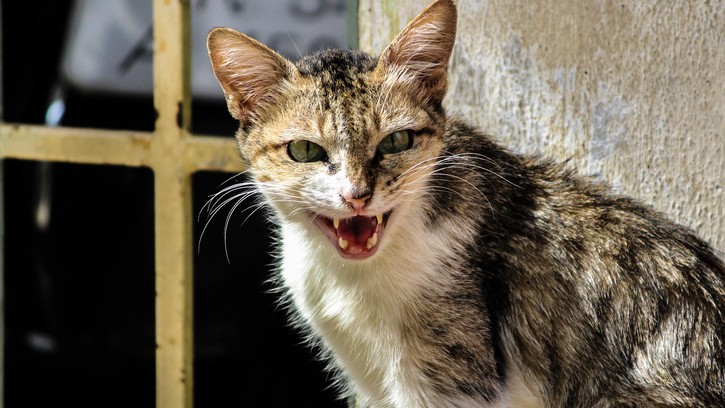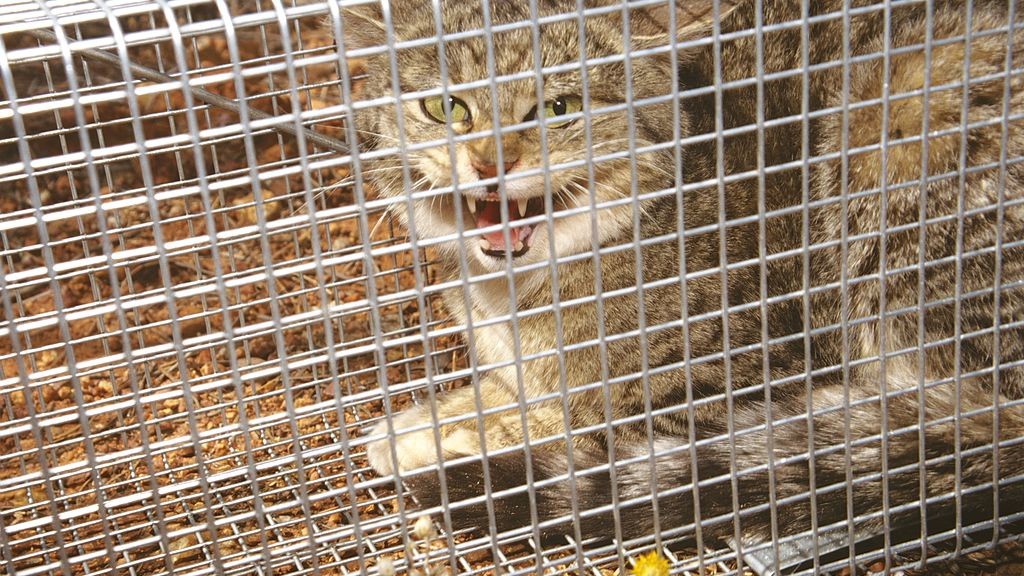What are feral cats – and can they be tamed?
What are feral cats? Should you try and adopt them, or are they beyond training? We answer this and more

What are feral cats? We all know what domesticated cats are – after all, there are 220 million of them in homes across the world – but what about their feral cousins? Just as importantly, if we encounter them, should we consider filling their bellies with the best dry cat food or leaving them to their own devices?
Here we are going to answer such questions, bearing in mind there are millions of feral cats roaming our planet's streets – up to 160 million in the United States and a million in the UK alone! As you’ll see, they behave in different ways to domesticated cats since they're more street smart and better able to stalk and capture prey. And they're not to be confused with stray cats either, as we're about to discover.
- Adopting a kitten: 5 ways to prepare for your new cat
- How to get a cat into a carrier: 7 steps to success
What does “feral cat” mean?
A feral cat is actually just another domestic cat. The word “feral”, however, describes those cats which have escaped captivity or domestication and are living in a wild state. Totally independent and able to look after themselves without any assistance, you can’t expect them to be friendly or beg you for food! But how do they get to this point?
In most cases, feral cats have never had any contact with humans. They’ve been born feral, lived feral and never known anything else. This distinct lack of socialization means they are much more wary of us and don’t see humans as caregivers in any way.
In some cases, though, feral cats have actually lived indoors with people and been socialized at some point in their life. In this kind of situation, they've somehow become separated from their owner, perhaps by wandering too far or being abandoned.
At first, they’ll have been classed as strays, remaining receptive to human contact and simply needing to be reunited with their owner or cared for. But if they end up being strays for too long and regular human contact dwindles, they can become feral and adapt to wild living.
How can you tell if a cat is feral?
Working out if a cat is feral is not as simple as checking if it’s wearing a collar. After all, lots of cats with owners don't wear collars. Similarly, you can't just look at a cat and believe it to be feral just because it appears to be in poor health. If anything, that is more indicative of a stray because feral cats tend to be pretty good at finding food and surviving in the great outdoors.
Feral cats are also usually well-kept and clean – pretty much answering the question, 'do cats need baths?' So what’s the big test? What are you watching out for?
First, the best way of telling if a cat is feral is to carefully try and entice it over. Strays may be shy but they are more likely to wander towards you, perhaps meowing, particularly if you have a handful of the best cat treats (if you want to know how long can cats go without food, the answer is two to three days).
If it’s a feral cats, then it will be far, far less likely to approach you in this way. They think we are threatening and they're generally scared of us. No matter what you do, it'll be very rare indeed if one decides to potter over.
Another sign is whether the cat is alone. Although feral cats can be spotted on their own, they often live in a colony so if you spot a few together then it's far less likely that you've simply encountered a stray. Feral cats are also more inclined to stay away from homes so the feline wandering around your garden is more likely to be a stray as well.

Are feral cats dangerous?
Feral cats are dangerous but only if they feel threatened. If they are left alone, they are not going to suddenly run over and attack because the thought of them going near humans fills them with fear. They will only become aggressive and start hissing or lashing out if they feel threatened. If a cat can't be coaxed over and you suspect it is feral, it's always best not to push things.
There is also a chance a feral cat is carrying parasites and diseases. Some of these could be passed to humans such as giardiasis, toxoplasmosis, campylobacter, cat scratch disease and rabies. But again, if a feral cat isn't coming near you, the risk is extremely low. In fact, you're more likely to catch an infection from a domesticated cat.
But what of the danger to other animals? There are worries that feral cat colonies pose a problem to wildlife and pets, spreading disease and seeing some animals as prey. It is actually hard to dismiss those concerns especially given feral cats are regarded as a serious threat to local, endangered species in parts of North America, Australia and New Zealand.
Can a feral cat be domesticated?
A stray cat can be re-acclimatized to living with humans indoors again, but feral cats generally can't be domesticated and experts tend to warn against trying. Even if you get past the stage where they are hissing, trying to bite and scratching, it's going to take a lot of work to turn their mindset around.
You'll have much more luck with kittens born to feral cats if they are less than four-months-old – a time when they can become receptive to socialization and discover the delights of having food handed to them. It's all about building up trust at that age and many cat owners do succeed in bringing feral kittens into their home and seeing them flourish. Much of the issue is whether or not you have the patience.
Can feral cats be tamed?
But if you can't domesticate a feral cat, can you at least tame one? Again, they're unlikely to become friendly and docile once they have passed the kitten stage. You'll also need to be constantly aware of their behavior, watching out for signs of discomfort just in case the cat decides to attack.
If you're not looking to bring a feral cat indoors, though, then you may find you rub along nicely with one so long as you respect its space and boundaries.If you decide to leave food out for them, just be sure that you're not giving them any of the eight human foods that are poisonous to cats. Feral cats still need to be treated with care!
What should you do with a feral cat?
If you spot a feral cat or a colony of feral cats, contact an organization that implements a program called Trap-Neuter-Return. As the name suggests, this involves trapping a feral cat, then spaying or neutering it. Once the cat has been vaccinated, it will be microchipped and a tiny part of its ear will be removed under anesthetic.
This procedure – called tipping – makes it easier to spot a treated feral cat and it's completely harmless. Once the cat has been checked over, it will be returned to the wild. This whole process can limit disease, prevent breeding, and ensure the cat is not stressed by being removed from the colony. In any case, you should always seek advice if you come across a feral cat.
Do you have a domesticated kitty who tends to spend a great deal of time exploring in nature's backyard? Learn all about caring for outdoor cats to ensure they stay safe and healthy.
PetsRadar Newsletter
Get the best advice, tips and top tech for your beloved Pets

David Crookes has been a journalist for almost 30 years and he has written for a host of magazines, newspapers, websites and books including the World of Animals Annual, BBC Earth, Live Science, The Independent and Tom’s Guide.
Born in England, he lives with two cats but he’s also keenly interested in the differences between the huge number of dog breeds – in fact, you can read many of his breed guides that he’s written in collaboration with vets here on PetsRadar.
With a lifelong passion for technology, too, he’s always on the lookout for useful devices that will allow people to keep their pets happier and healthier, and provide them more time to spend together.
David has a degree from Durham University, as well as postgraduate diploma in journalism from the University of Central Lancashire.
